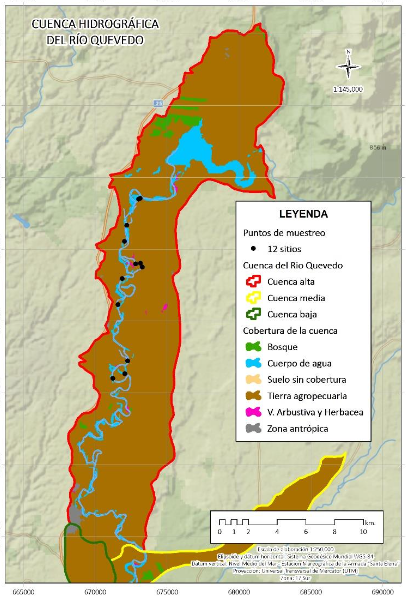Structure of aquatic macroinvertebrates and their relationship with land uses in the upper basin of the Quevedo River
Estructura de macroinvertebrados acuáticos y su relación con usos de suelo en la cuenca alta del río Quevedo
Show authors biography
Land uses are a factor that greatly affects riparian vegetation and aquatic insect communities. The objective of the study was to evaluate the response of the aquatic macroinvertebrate communities to the change in the riparian coverage of the upper basin of the Quevedo River, Ecuador. During the months of January to March 2018, 36 samplings were carried out in 12 stations in four land uses (forest, grassland, agricultural and mine), the collected specimens were identified up to gender. Physicochemical variables of the water were recorded: dissolved oxygen, hydrogen potential, conductivity, temperature, and total dissolved solids. 2,189 macroinvertebrates were captured, distributed in 11 orders, 38 families and 51 genera. The ANOSIM test established that the forest presented statistical differences in the similarity of abundance of aquatic macroinvertebrate genera between land uses. Similarly, the PERMANOVA analysis determined that the land uses presented significant statistical differences in the composition of genres, the land uses that did not present statistical differences were: (1) agricultural and mining; (2) pasture and mine; while the forest does not present similarity. There is influence of land uses in the composition of the aquatic macroinvertebrate communities, being the forest the one with the best ecological status; Unlike pasture, mine and agricultural with poor ecological quality.
Article visits 651 | PDF visits




